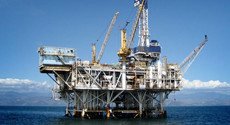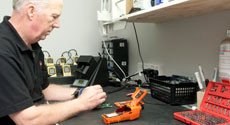Our gas detection systems meet the needs of all forms of power generation – coal, oil, natural gas and geothermal. Find out why…
On this page
- Gas detection in power stations
- FAQs (scroll down)
- Case studies (scroll down)
- Testimonials (scroll down)
Gas detection in power stations
Gas detection requirements for power generation depend on the fuel source. Fuel sources include coal, oil, natural gas and geothermal. Regardless of the type of power facility, gas leaks and other hazards pose significant risks to worker safety as well as disrupting the power supply to commercial and residential customers.
Our gas detection systems meet the needs of all forms of power generation. Our experience and advanced systems design equip us to be your preferred partner.
Specific applications
- Coal transport, processing and storage
- Boiler operations
- Cooling systems
- Power generation
- Nuclear power
- Transmission and distribution
- Confined space entry
- Inert gas blanketing
- Data-logging/industrial hygiene – workplace exposures
- Environmental
- Perimeter/fence-line monitoring
- Fixed point
Potential hazards
- Ammonia
- Carbon monoxide
- Carbon dioxide
- Hydrogen
- Methane
- Nitrogen dioxide
- Sulphur dioxide
- Combustible gases
- Oxygen deficiency/enrichment
Entec provides a wide range of fixed gas detection systems and portable gas detectors for the fishing industry to help keep employees safe and production running.
Find out more…
You can trust our expertise and rely on our service
We know your No. 1 priority is protecting your people and plant, and making sure you don’t fail legal or OSH requirements, have a staff member harmed or be prosecuted for an accident. With an increasing focus on health and safety in the workplace, your job and your company’s reputation depends upon it.
We understand the unique requirements of the power generation industry. You don’t need the hassle and risk of gas detection equipment that’s expensive, problematic, unreliable, prone to sensor failures, requires too much servicing, or has recurring problems. We’ll provide you with gas detection equipment that is…
- Cost-effective.
- Serviced locally in our authorised service centre (the only one in NZ).
- Easy and reliable to manage on-site via function test / bump test stations.
- Backed up with our support and expertise – we’ll be there when you need us.
Find out more…
FAQs
How long does your gas detection equipment last?
Depending on how they’re used there’s no reason a high-end gas detection instrument shouldn’t last 6 years. With low-cost instruments ($1,000) you will reach a stage where the gas detector is still fine but the cost of keeping it in the field is greater than buying a new one. For example, replacing two sensors and calibrating the unit could cost $1,100 compared to a new instrument at about $1,000.
What sort of water ingress protection do your gas detectors have?
All our instruments are IP rated (ingress protection rated). Typically IP67, which is very high. Gas detectors rated to IP67 must be dust tight and withstand immersion in water up to 1 metre deep for 30 minutes.
Solid particle protection level 6: No ingress of dust; complete protection against contact.
Liquid ingress protection level 7: No ingress of water in harmful quantity when the unit is immersed in 1 metre of water for 30 minutes.
See https://en.wikipedia.org/wiki/IP_Code for more info.
What are my options with bump testing / calibration?
We can provide you with options from the top end to the basic. With our iNet InSite programme you get all the bells and whistles, all the basics like data-logging, bump testing and calibration; plus you get reports on instrument usage such as…
- Instrument in alarm condition and alarm ignored.
- Instrument turned off whist in alarm condition.
- iNet Control.
What is iNet Control?
iNet Control is a web-based application accessible from any PC web browser that allows you to configure and manage your gas detector fleet. It gives you practical insights into your gas detection program using trends, performance metrics and custom reports.
Can you calibrate our gas detectors for us?
Yes. Calibrations done by us at our premises cost $140 per instrument.
Are gas detectors intrinsically safe?
Yes. All our instruments are independently tested by authorities such as ATEX, IECEx, ANZEx, UL, CSA and many more, usually country dependant.
New Zealand recognises the first 3. The gas detector has a sticker attached to it referring to the certification authority and its rating. Many have more than one authority rating, often 3.
How much do gas detectors cost?
Depending on sensor configuration and the number of gas detectors being purchased, the price varies from $950 to $4,500. The MX4, our most popular portable instrument, sells for $950 to $1,150 depending on configuration.
What’s the turnaround for service?
We have same-day turnaround for over 90% of the gas detection instruments we service and calibrate. It varies a little depending on the number of units in for service, but we strive for same day turnaround as much as possible.
Do your instruments detect carbon dioxide (CO2)?
Yes, the MX6 can be fitted with an infrared sensor that detects CO2.
Do your gas detectors detect toxic gases such as carbon monoxide (CO), nitric oxide (NO) and nitrogen dioxide (NO2)?
You would typically be looking at our MX4, MX6 and single gas models depending on the application, etc.
Do your gas detectors detect hydrogen sulphide (H2S)?
Yes. You would typically be looking at our MX4 model.
Do your gas detectors detect combustible gasses such as methane, hexane, pentane and ethane?
Yes. You would typically be looking at our MX4 model.
Can you train us in how to use the gas detectors?
Yes, most definitely. On delivery we like to spend time with the users taking them through the basic use of the gas detector. We also like to spend time with the users of the docking stations teaching them how to use them. Industrial Scientific also has very good online training modules.
Case study: High sensor failure and poor reliability
A customer was having reliability issues with the gas detections instruments in use. The cost of keeping them in the field and the sensor failure rate was annoyingly high. When we provided a quote they found the decision to switch to our instruments was a no-brainer. We have been supplying this client ever since.
Testimonials
“For over four years we have used 20+ MX4 instruments on our 8 hydro-electric power stations. The instrument we used prior to the MX4 did not meet our expectations whereas the MX4 has exceed our expectations.”
– [Name withheld], shift manager, power station
Do you have questions?


